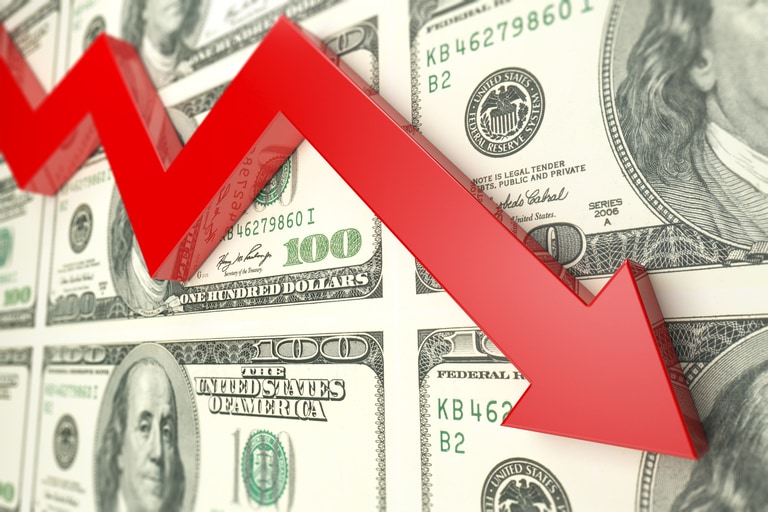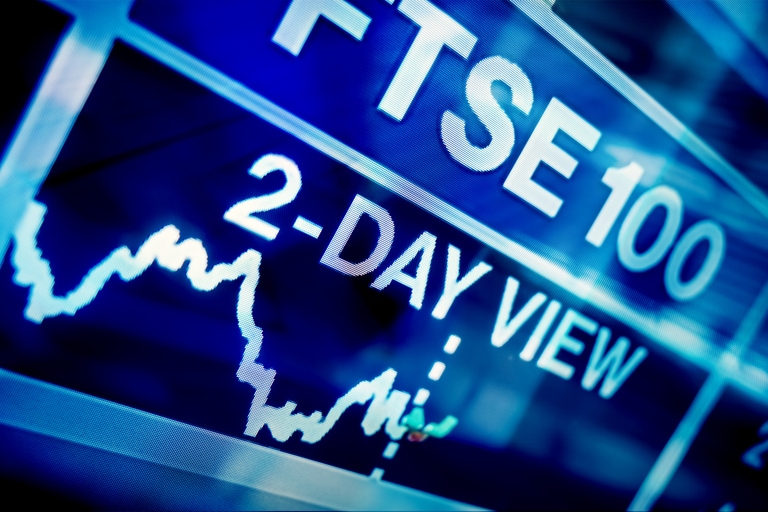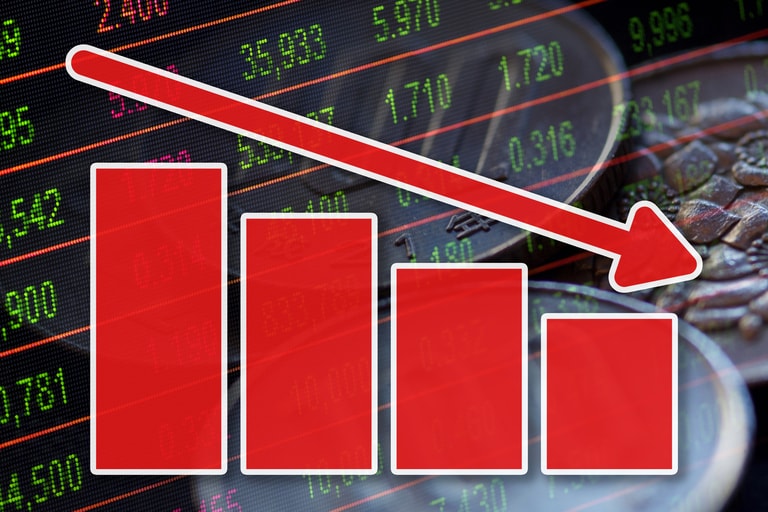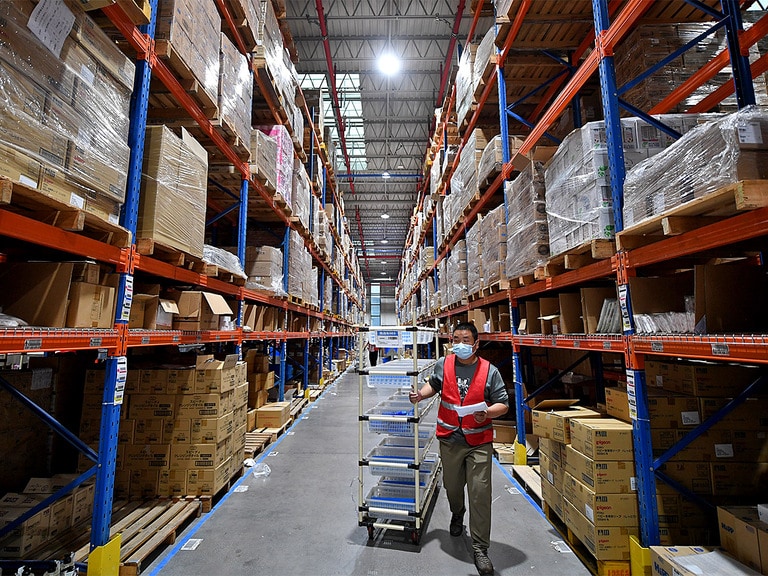Yesterday saw another negative session for US and European markets as a continued rise in bond yields weighed on the wider market.
Improvements in US weekly jobless claims data, along with this week’s hotter than expected core inflation numbers appear to be prompting investors to hedge their bets over the prospect that the Federal Reserve might be tempted to raise rates next week by 100bps.
Nowhere is that more illustrated than in this week’s rise in US 2-year yields, which have risen by 30bps this week alone.
Concerns about a global recession are also growing, manifesting themselves by way of weakness in commodity prices, crude oil prices slumping by over 3% yesterday, while natural gas prices on both sides of the Atlantic also plunged sharply.
These fears have translated into further weakness in Asia this morning with the latest Chinese retail sales and industrial production data for August offering some encouragement of an economic improvement, but unable to turn around the wider negative tone, with European markets set to open lower.
Last week we saw the effect of the Chinese government’s insistence in sticking to its zero-covid policy with sharp declines in both imports and exports in August. This insistence is likely to act as a brake on the Chinese economy over the course of the rest of the year.
Since relaxing some of the more onerous covid restrictions in April we have seen a pickup in consumer spending albeit from a fairly low base.
After the weak retail sales numbers from April and May, June saw a rise of 3.1%, however this slowed to a 2.7% rise in July as Q3 got off to a slow start. Since those numbers came out the Chinese government has tempered expectations of what its economy is likely to achieve this year in terms of overall growth, saying its 5.5% GDP target is now an aspiration.
Consumer confidence has remained weak in August with various isolated lockdowns in cities around Beijing while the total lockdown of Chengdu won’t have helped either.
Nonetheless we have seen a rebound with August retail sales coming in at 5.4%, a decent improvement on July’s 2.7%, and the best performance this year. Online sales here saw a strong rebound, but with covid cases starting to rise again as the weather gets colder it’s unlikely that these numbers will be sustainable enough to assuage concerns over more pain to come.
Industrial production came in at 4.2%, a solid improvement on the 3.8% in July.
In a week that has been overshadowed by a country coming together to mourn the passing of Queen Elizabeth II, this week’s UK economic data has shown that inflation might be showing signs of nearing a short-term peak, even as unemployment falls close to a record low. All the while wages growth has struggled to keep up, even as it is still at a historically high level of in excess of 5%.
This drop in real earnings is expected to continue to be reflected in weak consumer spending and another decline in retail sales, as a 0.3% rebound in July is more than cancelled out by an expected -0.5% decline in August.
We could see an improvement in fuel sales with the decline in petrol prices, but with grocery price inflation at 12.5%, consumers are likely to have found their budgets squeezed even further as back to school spending picks up and the end of the school holidays sees a bit of a last hurrah in terms of summer holiday spend.
We’ve seen yet another record high for EU CPI, in the recent flash numbers, pushing up to 9.1%, while core prices rose by 4.3%. This is expected to be confirmed in numbers released later today.
This prompted the ECB to implement their second successive rate hike last week, this time raising rates by 75bps, pushing all three headline rates into positive territory for the first time since 2014.
The rise in prices in the last two months has been quite startling when you consider we were at 8.1% in May.
There are concerns that this may not be the end of it with PPI inflation over 3 times higher, which suggests that prices are likely to remain high for a while to come, even as we start to see signs that inflation might be peaking in the US, as well as the UK where headline CPI slipped back in August.
EUR/USD – still looks weak having failed at trend line resistance from the highs this year, now at around 1.0180. A break through 1.0200 is needed to signal further gains. The bias remains towards the previous lows at 0.9865, and the 0.9620 area.
GBP/USD – the pound had a disappointing session yesterday bringing it closer to key support at the 1.1410 area. A move below 1.1400 targets 1.1000. We need to see a move above 1.1800 to stabilise.
EUR/GBP – retesting the 0.8720/30 level which remains the key barrier to further gains towards 0.8800. A move below 0.8620/30 opens up the 0.8580 area.
USD/JPY – hasn’t dipped much from this week’s peaks just below 145.00, despite the Bank of Japan rate-checking midweek. We need to see a move below 141.00 to delay a move towards the 1998 highs at 147.70. A move below 141.00 could signal further declines towards 139.80.
CMC Markets erbjuder sin tjänst som ”execution only”. Detta material (antingen uttryckt eller inte) är endast för allmän information och tar inte hänsyn till dina personliga omständigheter eller mål. Ingenting i detta material är (eller bör anses vara) finansiella, investeringar eller andra råd som beroende bör läggas på. Inget yttrande i materialet utgör en rekommendation från CMC Markets eller författaren om en viss investering, säkerhet, transaktion eller investeringsstrategi. Detta innehåll har inte skapats i enlighet med de regler som finns för oberoende investeringsrådgivning. Även om vi inte uttryckligen hindras från att handla innan vi har tillhandhållit detta innehåll försöker vi inte dra nytta av det innan det sprids.






